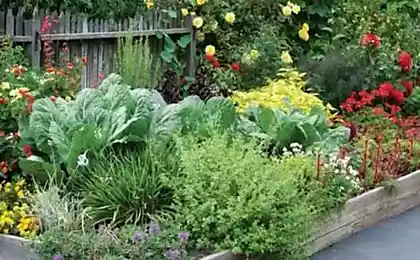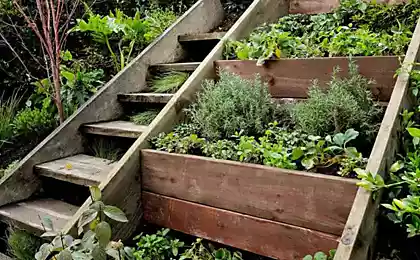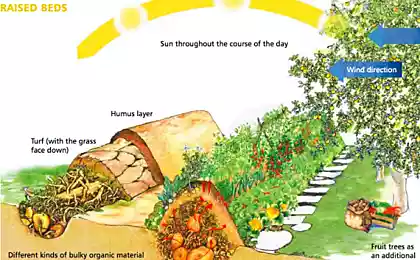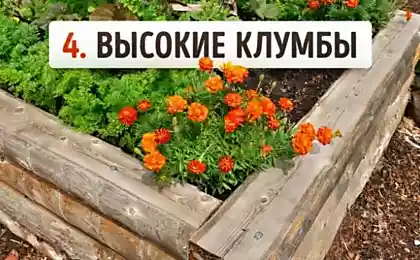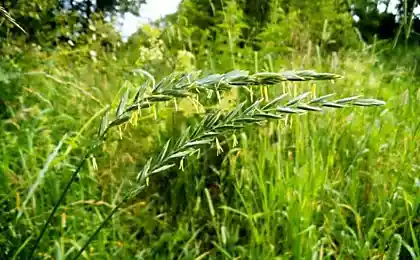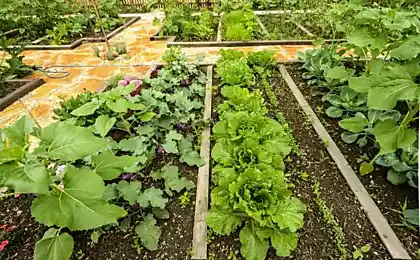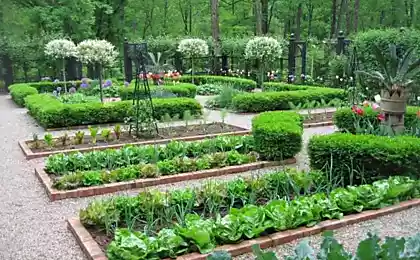445
10 tips on caring for garden beds high
High beds do not require much care. Every spring or autumn update top new beds with compost or good soil. Better yet, bury the compost in a flower bed a few inches deep.
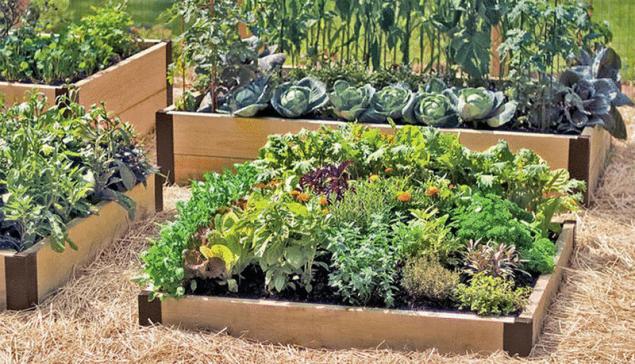
Multiroute the top of the beds. This will help retain moisture, as high beds dry out faster than normal. But at high raised beds, the soil warms faster and dries faster in the spring than usual.
High ridges allow us not to fight with the weeds and old roots, and the soil they are fluffy and light since we don't use it. Of course, in dry and hot weather, these beds dry out quickly. Tree roots find their way to the food in such patches. Cats use high beds for some of their needs. But these are minor flaws.
1. Never walk on the soil, never!
2. Creating a garden bed, make it so the height and width, so you can handle it without stepping on the bed. If you do not work, have a couple of boards that you put in, and will be able to step on them.
3. Mulch of straw, sawdust, leaves, cut grass will help you to maintain moisture and save you from fighting weeds.
4. Plan your irrigation. If you look in the shop of sanitary goods, you will be able to choose there all
necessary for proper irrigation. But if you lay the drip irrigation system during the construction of the beds, then you do not have to stand with the hose.
5. If there are large nearby trees, and you want to protect yourself from the roots and the invasion of weeds from these trees make a barrier. Kopite on the edge of any garden fences made of asbestos, cardboard, boards, of the old Palace. In the future this will save you from additional work on weed control.
6. Cover the soil with compost. High bed — it is something akin to the container. And the soil in it is depleted just as quickly. Add a couple of inches of compost or good soil throughout the flower bed each spring before sowing or planting.
7. Learn to loosen the soil using a garden fork. Stick the fork into the ground at every possible depth and swing them to the ground. Pierce with fork every 30-40 cm beds.
8. Protect your soil from erosion. Cover the soil in late season grass, pulled weeds, waste vegetables. Can any other mulch.
9. Plant cover crops in the offseason. And then bury them.
10. Consider how to expand the boundaries of the garden season. To do this, use greenhouses and film shelters... posted
P. S. And remember, only by changing their consumption — together we change the world! ©
Source: secretdachi.ru/razumnoe-zemledelie/1961-10-sovetov-po-ukhodu-za-vysokimi-gryadkami.html

Multiroute the top of the beds. This will help retain moisture, as high beds dry out faster than normal. But at high raised beds, the soil warms faster and dries faster in the spring than usual.
High ridges allow us not to fight with the weeds and old roots, and the soil they are fluffy and light since we don't use it. Of course, in dry and hot weather, these beds dry out quickly. Tree roots find their way to the food in such patches. Cats use high beds for some of their needs. But these are minor flaws.
1. Never walk on the soil, never!
2. Creating a garden bed, make it so the height and width, so you can handle it without stepping on the bed. If you do not work, have a couple of boards that you put in, and will be able to step on them.
3. Mulch of straw, sawdust, leaves, cut grass will help you to maintain moisture and save you from fighting weeds.
4. Plan your irrigation. If you look in the shop of sanitary goods, you will be able to choose there all
necessary for proper irrigation. But if you lay the drip irrigation system during the construction of the beds, then you do not have to stand with the hose.
5. If there are large nearby trees, and you want to protect yourself from the roots and the invasion of weeds from these trees make a barrier. Kopite on the edge of any garden fences made of asbestos, cardboard, boards, of the old Palace. In the future this will save you from additional work on weed control.
6. Cover the soil with compost. High bed — it is something akin to the container. And the soil in it is depleted just as quickly. Add a couple of inches of compost or good soil throughout the flower bed each spring before sowing or planting.
7. Learn to loosen the soil using a garden fork. Stick the fork into the ground at every possible depth and swing them to the ground. Pierce with fork every 30-40 cm beds.
8. Protect your soil from erosion. Cover the soil in late season grass, pulled weeds, waste vegetables. Can any other mulch.
9. Plant cover crops in the offseason. And then bury them.
10. Consider how to expand the boundaries of the garden season. To do this, use greenhouses and film shelters... posted
P. S. And remember, only by changing their consumption — together we change the world! ©
Source: secretdachi.ru/razumnoe-zemledelie/1961-10-sovetov-po-ukhodu-za-vysokimi-gryadkami.html
Guilt and responsibility: experience the difference
Lernstift – the most intelligent writing pen in the world
